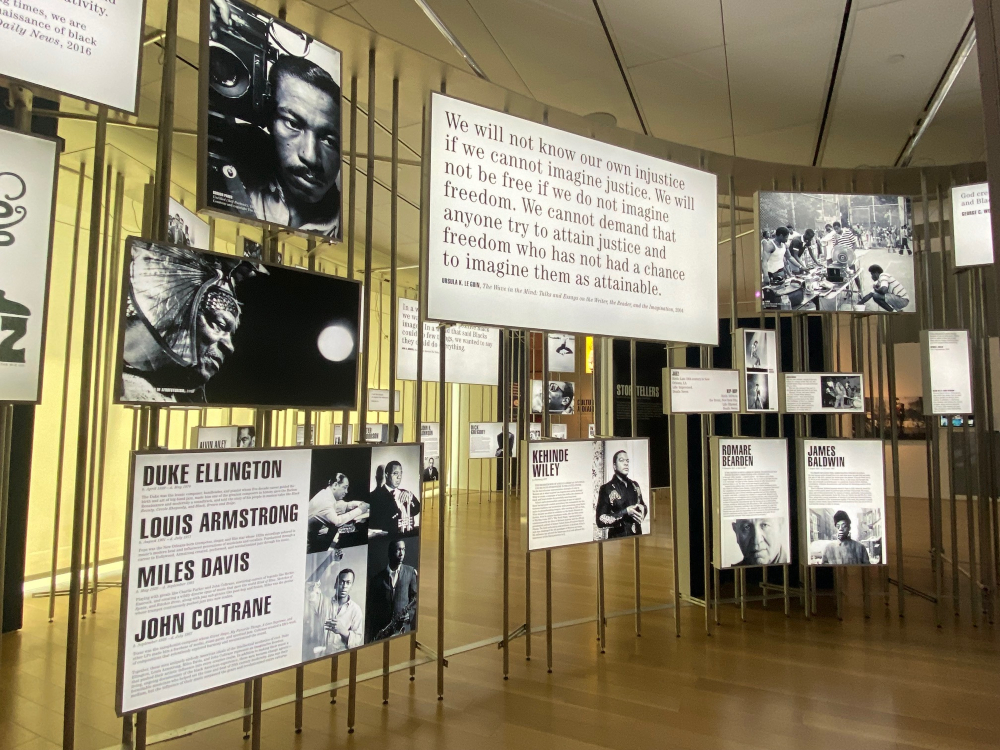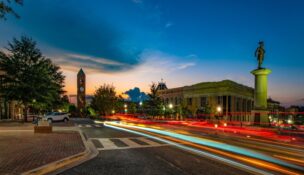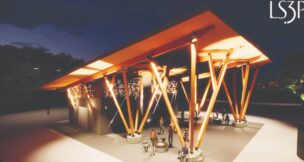‘TRAGEDY AND TRIUMPH’: IAAM opens in Charleston
Jenny Peterson //June 27, 2023//

A triumphant celebration and dedication of the much-anticipated $94 million International African American Museum was held on Saturday, June 24, with many guests, including Congressman James Clyburn, former Charleston Mayor Joe Riley and Consul General of Barbados Rudy Grant.
After 23 years in the making, the museum officially opens to the public today, Tuesday, June 27.
Phylicia Rashad, former actress and dean of the Chadwick A. Boseman College of Fine Arts at Howard University, emceed the event at the museum’s waterfront site at Gadsden’s Wharf. A simultaneous community celebration was held at Marion Square.
Former President Barak Obama and Michelle Obama sent a taped congratulations that was played for the several hundred in attendance at the museum site and the crowd enjoyed many musical performances, poetry readings, dances and speeches from distinguished guests.
Related content: Meet the CEO of the International African American Museum in Charleston
Related content: Exhibits define 'one of the most important museums in the world' in Charleston
In 2000, former Mayor Joe Riley spearheaded the creation of the museum as a place to tell the untold stories of African American history on the site of the most prolific slave trading port in the country.
“This museum will tell history where history took place,” said Riley. “This museum started with a book, Edward Ball’s award-winning ‘Slaves in the Family.’ I bought a copy as soon as it was published in 1998. I met Edward Ball years earlier when he was in Charleston researching and writing this book. Reading this book was transformative.
"When I finished, I vowed we must build this museum in Charleston. It was long past time we told our true history, our country’s history. Stories of tragedy and triumph and extraordinary courage and genius.”
Museum located at a ‘sacred site’
Nearly 50% of all enslaved human beings who came to the United States entered at Gadsden’s Wharf — more than 100,000 people between the 1760s and the year 1808. The site of the museum is where enslaved Africans took their first steps onto U.S. soil following a nearly 100-day passage across the Atlantic Ocean.
 In 2014, the city purchased the 2.3-acre waterfront plot for $3.5 million for the museum to be built.
In 2014, the city purchased the 2.3-acre waterfront plot for $3.5 million for the museum to be built.
“We refer to it as hallowed ground, a sacred site. Some folks even refence Ground Zero,” said Tonya Matthews, president and CEO of the IAAM. “We honor the fact that we have power of place and we have reclaimed this important site.”
The final design is an elevated building, floating in air, with thoughtful gardens and sculptures below.
“The building does not occupy the land, rather, it rests on 18 pillars allowing it to have a weightless effect and respect to these hallowed grounds,” Riley said.
Landscape designer Walter Hood, with California-based Hood Studios, said his team came up with 32 designs for the memorial gardens. The final design includes a powerful installation of figures outlined on the ground with tide pools filling in the etched lines at varying levels near the wharf line.
Inside the museum, a robust staff of 60 people make up learning and engagement teams and engagement for faith-based community teams. There’s also the Center for Family History, a family genealogy center, which will help visitors trace their ancestry in a library-like setting.
What is inside the museum
This museum tells the stories of Africans from 300 B.C. through 2023 and the perseverance through the middle passage, resistance to enslavement, triumphs over segregation and significant contributions to the country’s history. It mixes letters, items and artifacts, photos, art, historical records, videos and touchscreens for many types of engagement.
Nine galleries explore themes of suffering, resilience and hope; how enslaved people brought their traditions of song, dance and prayer to their new lives. A South Carolina gallery includes the history of Carolina Gold Rice and the Gullah community. There is a replica praise house with video testimonials from local African Americans and spirituals songs and quiet rooms for visitors to reflect with a box of tissues.
“When you ask me what I want people to ‘feel’ in the museum? It’s akin to everything. It’s not, ‘this exhibition talks about tragedy, this talks about victory.’ There is a little bit of all those stories in each step that you take,” said Dr. Matthews. “One of my beliefs is that the power and gift of truly understanding the African American journey is understanding our ability to simultaneously hold the sensations of (both) trauma and joy. It is constantly woven in there together.”
Riley said the IAAM had a robust fundraising team for its creation and construction and there was $125 million raised from tens of thousands of donors.
“I estimate we made 10,000 individual phone calls and at least 6,000 pre-planning sit-down fundraising meetings,” Riley said. “Our quest to seek and demand excellence in every single aspect of this museum is unrelenting.”
The funding behind the facility
Funding sources included $25 million in local funds from the City of Charleston and $5 million from the state of South Carolina. In 2009, President Barak Obama earmarked $712,500 in his federal budget for the museum. Groundbreaking was held in October 2019.
The design team included Pei Cobb Freed & Partners as design architects, with Harry Cobb and Moody Nolan as the architects and Ralph Applebaum Associates as exhibition designers.
The museum has received national attention from major media outlets leading up to its opening, already being praised as one of the most important museums in the world.
Members of congress got a sneak peek over Memorial Day weekend at the invitation of Congressman James Clyburn, who chaired the museum’s steering committee and now sits on its board of directors.
“I hosted several hundred visitors, including members of congress. They were so impressed by the depth and breadth of that experience, several of them have already made plans to come back and bring their families,” Clyburn said. “In the early days, there were intense discussions about what kind of museum this should be. One school of thought was that the focus should be on slavery. Others felt it had to be much more. Thankfully, the latter thought prevailed.”
“These are institutions that are not easy to construct,” said Malika Pryor, chief learning and engagement officer at IAAM. “I’ve been in the business of non-profit programming for over 20 years. I’ve been in the business of museums for 13 years. In a moment where the idea of the African American experience being quincentennial to the American experience is being challenged around the nation, what a moment to be alive.”
The museum is located at 14 Wharfside St. and open Tuesday-Sunday from 10 a.m. until 5 p.m. There will be timed entry tickets. The outside grounds and gardens are free to visit. Learn more at by clicking here.
r
















